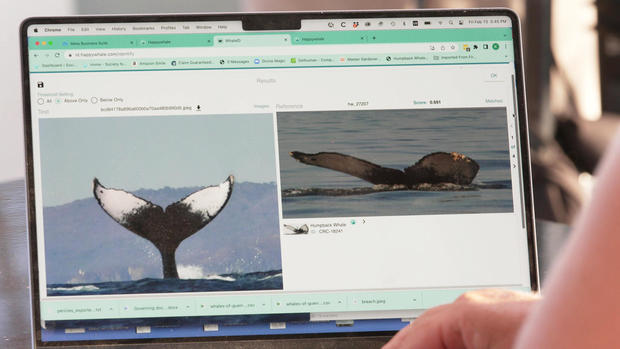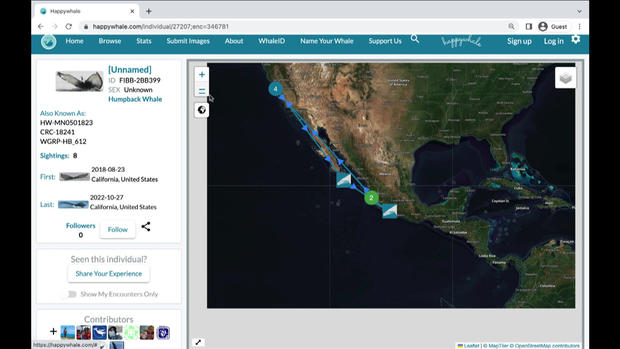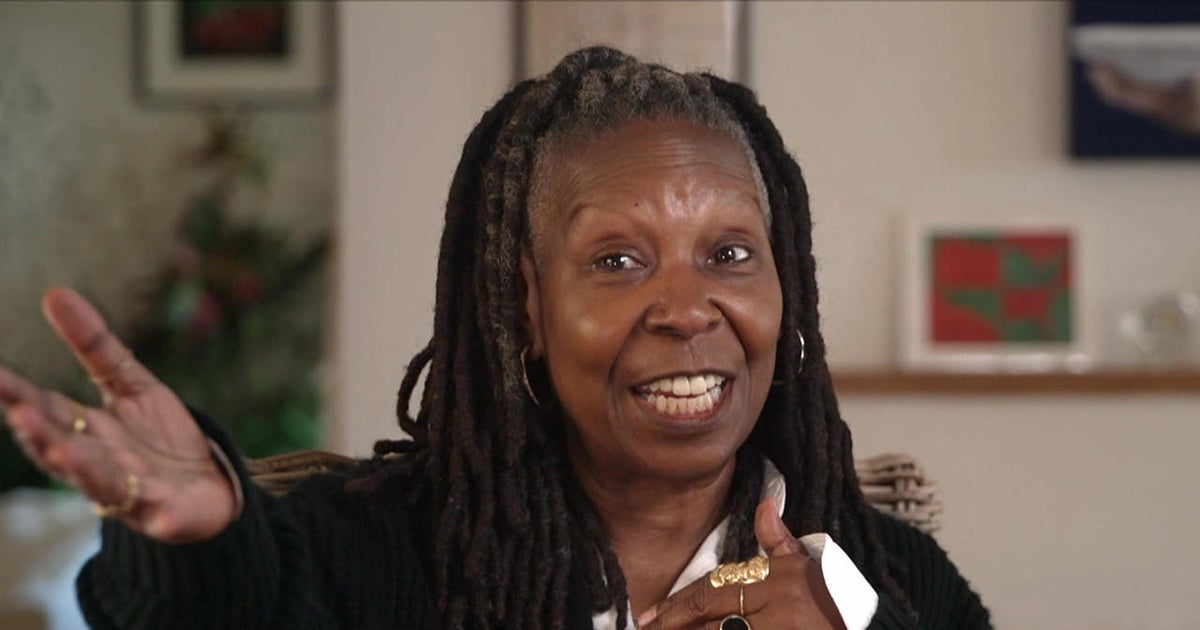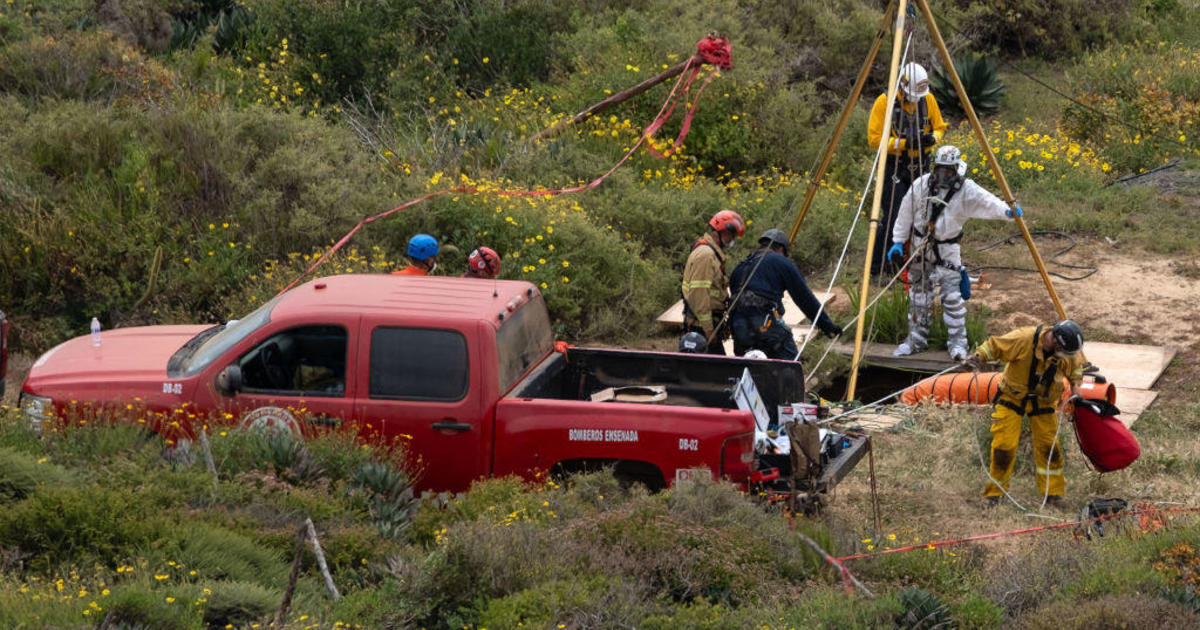Facial recognition? How about tail recognition? Identifying individual humpback whales online
Located along Mexico's southwest coast in the state of Guerrero, the village of Barra de Potosí is a bit off the beaten path. You won't find any mega resorts full of tourists here, but the area is a popular vacation destination for humpback whales, which travel thousands of miles just to breed in this patch of the Pacific.
"They're coming down here for this warm, topical, salty water where they can come and really relax," said Katherina Audley, the founder of the non-profit Whales of Guerrero. A decade ago, she began working with local fisherman here to develop a conservation-focused eco-tourism program. "We talk about here, 'When the whales win, everyone wins,'" she said. "And that's something that people in the community here really understand."
Former fishing boats have been repurposed into whale-watching vessels, which are really TAIL-watching vessels. When whales dive, they flash their tails, known as flukes. And during the months when the humpbacks are in residence here, they put on quite a show.
Audley took these photos out on the boat.
Back on land, we got online, and that's where this tale gets a little deeper. One whale was ID'd as CRC-18946, another as CRC-18241. Turns out, we weren't the first to watch these whales.
Every whale's tail is unique – the ridges at the top, the colors and patterns of the fluke. It's like a fingerprint, a clue.
Audley said, "This whale algorithm has allowed us to instantly put together six sightings for this whale."
It's all possible thanks the website HappyWhale.com. Anyone in the world can upload a fluke photo, and Happy Whale will analyze it and match it up to all other known sightings.
Both whales we photographed in Mexico had been seen the year before near Monterey, California, which is also where you're likely to spot the human behind Happy Whale. Ted Cheeseman grew up whale watching in Monterey Bay, which is full of whales in the summer months; they come to feed here. He went on to work as a naturalist, guiding expeditions all over the world.
While scientists have used flukes to identify whales for decades, Cheeseman couldn't understand why the process had remained so cumbersome: "Eventually these catalogues got so big that it would take, you know, an hour to figure out, is my whale in here? Or is it a new whale?" he said. "Flipping through a physical book and then, you know, more recently flipping through photos on a computer."
Cheeseman figured there had to be a better way. He and his co-founder Ken Southerland approached Silicon Valley companies for help in developing an algorithm. If facial recognition was possible, couldn't the same principles be applied to fluke recognition?
"Being able to track individuals is very, very powerful," Cheeseman said. "We have our privacy concerns. Are we being tracked individually? Well, thankfully, the whales don't really care!"
This aquatic invasion of privacy has been hugely helpful for researchers. Since launching in 2015, Happy Whale has received more than 100,000 submissions. Looking at the map on the site, it's clear to see the links between the whale population in California and Mexico, and the links between other whales that travel from Alaska to Hawaii.
Cheeseman said it has happened a lot where a whale not sighted for years suddenly pops up again on the Happy Whale grid.
Whales are full of surprises. They don't always migrate to the same spots, and we still don't know exactly how they find their way. We know humpback whales sing – their songs are incredibly complex – but we still don't know why.
Happy Whale just helps us understand the who.
"It makes the whales fun to learn about," Cheeseman said. "If you know that whale by name, you're going to care more about that whale. And if you care more about that whale, you care more about the oceans."
On my Monterey Whale Watch trip in May, we saw a whale that had never been uploaded before. I added my photo to the site, and now I'll get updates every time that whale is spotted.
Who knows? Maybe it will pop up in Mexico next winter.
Audley said, "Those of us that have whales that we care about, that's really the first email we look at in the morning, is these Happy Whale updates."
Does she get feedback every day? "Every day, yes. It's so exciting when you're on a boat with people and they are seeing whales maybe for the first time. And then for it to go from a big gray mass to an individual whale that has a whole history, it's very powerful for people to get connected to them that way."
For more info:
Story produced by Anthony Laudato. Editor: Chad Cardin.







